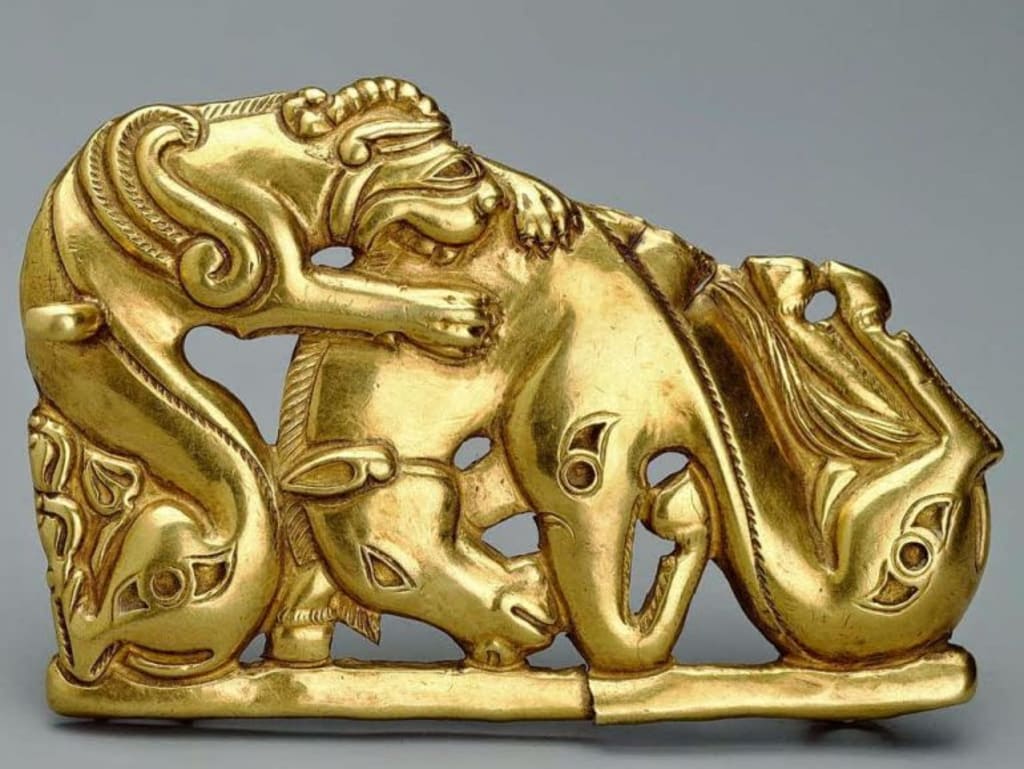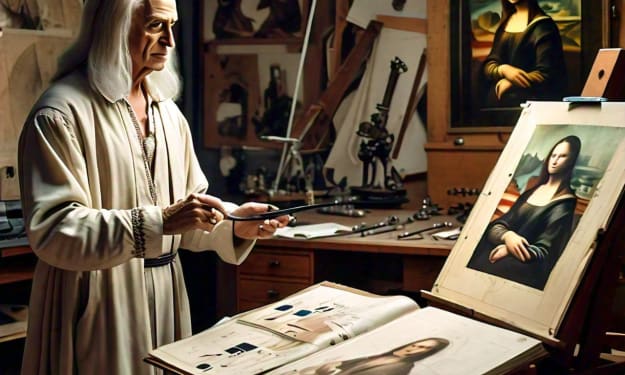Scythian Goldwork: Masterpieces of Ancient Nomadic Artistry
History

Scythian goldwork, produced by the ancient Scythians, showcases the exceptional craftsmanship and artistic innovation of this nomadic culture. Renowned for its intricate designs and exquisite detail, Scythian goldwork provides valuable insights into the society, beliefs, and interactions of the Scythians. This article explores the origins, techniques, designs, cultural significance, and enduring legacy of Scythian goldwork.
Origins and Historical Context
The Scythians were a nomadic people who inhabited the vast Eurasian steppes from approximately the 9th century BCE to the 3rd century BCE. Originating from Central Asia, they expanded westward, establishing a significant presence in what is now Ukraine, Russia, and Kazakhstan. Their culture was characterized by a combination of nomadic traditions and interactions with settled civilizations, such as the Greeks and Persians.
Gold played a crucial role in Scythian society, symbolizing wealth, power, and religious significance. The Scythians were skilled horsemen and warriors, and their ability to create intricate gold artifacts reflects their wealth, derived from both warfare and trade.
Techniques and Craftsmanship
Scythian goldwork is renowned for its sophisticated techniques and high level of craftsmanship:
- Materials and Sources: The Scythians used high-quality gold, often sourced through trade with neighboring civilizations or acquired as spoils of war. Their gold artifacts were often embellished with gemstones and other precious materials.
- Metalworking Techniques: Scythian artisans employed various advanced techniques, including:
- Granulation: The application of tiny gold beads to create detailed patterns.
- Filigree: Delicate gold threads twisted into intricate designs.
- Repoussé: Shaping gold by hammering it from the reverse side to create raised designs.
- Casting and Mold-Making: Using molds to create uniform pieces, which were then assembled into complex artifacts.
- Tool Usage: The precision of Scythian goldwork suggests the use of specialized tools, likely made from iron and other durable materials, allowing for fine detail and intricate designs.
Designs and Iconography
The designs and iconography of Scythian goldwork reflect their culture, beliefs, and daily life:
- Animal Motifs: A distinctive feature of Scythian goldwork is the use of animal motifs, often depicted in a stylized manner. Common animals include stags, lions, eagles, and mythical creatures, symbolizing power, protection, and spiritual beliefs.
- Human Figures and Scenes: Some pieces depict human figures engaged in various activities, such as hunting, fighting, or performing rituals. These scenes provide insights into Scythian life and customs.
- Ornamental Patterns: Geometric patterns, spirals, and intricate scrolls are frequently used, demonstrating the artisans' skill in creating complex and visually appealing designs.
- Functional and Decorative Objects: Scythian gold artifacts include a wide range of objects, from functional items like jewelry, weapons, and horse trappings to purely decorative pieces used in burial rites and as status symbols.
Cultural and Social Significance
Scythian goldwork held profound cultural and social significance within their society:
- Symbol of Status and Wealth: Gold artifacts were a clear indicator of status and wealth. They were worn by elites and used in ceremonies to display power and influence.
- Religious and Ritual Use: Many gold items had religious or ritualistic purposes. They were often buried with the dead as grave goods, intended to accompany the deceased into the afterlife.
- Cultural Identity: The unique style of Scythian goldwork helped to define and express Scythian cultural identity. It served as a means of distinguishing themselves from other cultures and reinforcing social cohesion within their own.
Historical Impact and Rediscovery
The historical impact of Scythian goldwork is significant, providing a window into the ancient world of the Eurasian steppes:
- Archaeological Discoveries: Numerous Scythian gold artifacts have been discovered in burial mounds, known as kurgans, across the Eurasian steppes. These findings have been crucial in reconstructing Scythian history and culture.
-Museum Collections: Many of these artifacts are housed in major museums around the world, such as the Hermitage Museum in St. Petersburg and the British Museum in London, where they continue to be studied and admired.
- Scholarly Research: Ongoing research into Scythian goldwork has provided insights into their techniques, trade networks, and cultural interactions. It has also highlighted the influence of Scythian art on neighboring cultures.
Legacy and Modern Relevance
The legacy of Scythian goldwork endures in various fields, from art history to contemporary jewelry design:
- Cultural Heritage: Scythian gold artifacts are celebrated as part of the cultural heritage of the regions they once inhabited. They are symbols of the artistic and technological achievements of ancient nomadic societies.
- Influence on Art and Design: The motifs and techniques of Scythian goldwork have inspired modern artists and jewelry designers, who draw on these ancient designs to create contemporary pieces.
- Historical Scholarship: The study of Scythian goldwork continues to enrich our understanding of ancient Eurasian cultures. It provides valuable lessons in craftsmanship, cultural exchange, and the use of art as a medium for communication and expression.
Conclusion
Scythian goldwork stands as a remarkable achievement in ancient art and craftsmanship. Its intricate designs and sophisticated techniques reflect the wealth, power, and cultural identity of the Scythian people. Rediscovered through archaeological efforts, these artifacts offer invaluable insights into the lives and beliefs of this ancient nomadic civilization. Celebrated in museums and inspiring modern creativity, Scythian goldwork remains a testament to the enduring legacy of the Scythians' artistic and technological prowess. As symbols of their cultural heritage, these gold artifacts continue to captivate and educate, bridging the past and present through the timeless language of art.
About the Creator
Marveline Merab
“History never repeats itself. Man always does.”
― Voltaire
Enjoyed the story? Support the Creator.
Subscribe for free to receive all their stories in your feed. You could also pledge your support or give them a one-off tip, letting them know you appreciate their work.






Comments
There are no comments for this story
Be the first to respond and start the conversation.